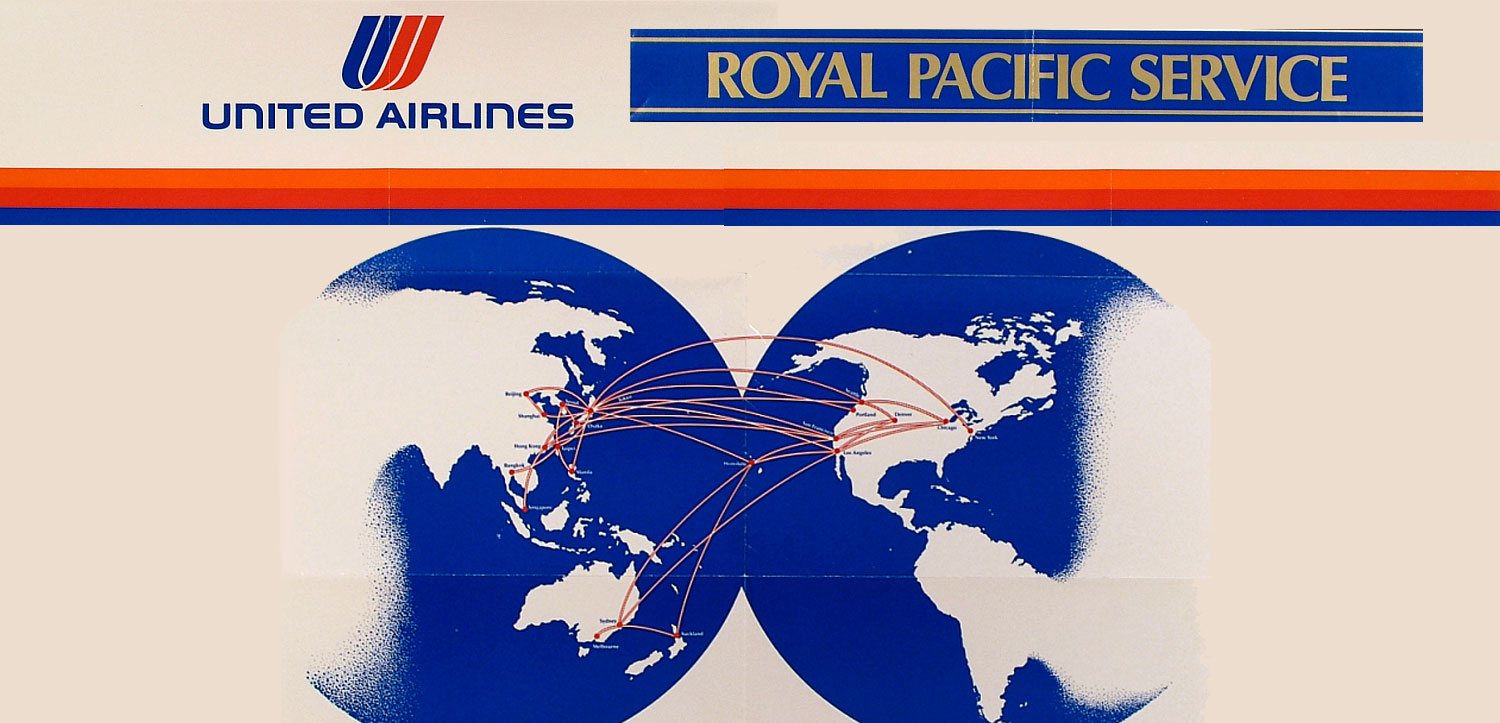
One of my favorite industry blogs is Cranky Flier, written by Brett Snyder. We both live in Los Angeles and I have benefited from his perspective for years. But I think he missed a big issue in his recent analysis about the alarmingly low Asia-Pacific loads on United Airlines.
United Airlines Struggles To Fill Seats On Many Asia-Pacific Routes, But There’s More To The Story Than Passenger Loads
In a story entitled, “United Struggles to Fill All Those Seats Down Under” Snyder points out that United’s transpacific passenger loads have been alarmingly dismal on some routes to Asia and particularly in the South Pacific.
In its Q1 results, United announced some pretty gruesome numbers. The average fare for the airline over the Pacific dropped by 2.8 percent year-over-year. Even with that decline in fare, its load factor plunged 7.6 points. The end result was unit revenue dropping a hefty 12.9 percent in the region.
Indeed, the load factors for December 2023 – January 2024 are, in some cases, eye-raising:
- Manilla (MNL) – 90%
- Taipei (TPE) – 85%
- Hong Kong (HKG) – 84%
- Delhi (DEL) – 84%
- Seoul (ICN) – 81%
- Singapore (SIN) – 79%
- Shanghai (PVG) – 76%
- Tokyo Narita (NRT) – 75%
- Auckland (AKL) – 68%
- Beijing (PEK) – 67%
- Melbourne (MEL) – 66%
- Tokyo Haneda (HND) – 64%
- Sydney (SYD) – 62%
- Christchurch (CHC) – 58%
- Brisbane (BNE) – 58%
- Osaka (KIX) – 56%
- Tahiti (PPT) – 48%
One contributing factor has been a 68.7% increase in passenger seat miles available across the APAC region (we’ve seen other carriers also add service and even financial incentives in the South Pacific like generous subsidies from Brisbane, Australia for launching transpacific service).
Snyder says, “The Papeete (Tahiti) flight is not doing well. I can’t imagine the fares are good enough to justify flying a half empty airplane. Woof.”
“I have little doubt that United will decide it needs to make changes after this weakness.”
Yes, United will adjust accordingly. But his analysis misses a key point.
Cargo.
My contacts at United tell me that passenger loads have underperformed on some routes, but Snyder’s analysis does not take into consideration strong cargo loads that can effectively offset lower PRASM (Passenger Revenue per Available Seat Mile). Cargo profitability has dipped from its pandemic highs but is still a meaningful revenue source on many longhaul routes.
Take Christchurch, for example. United’s link to New Zealand’s South Island is unique. The cargo opportunities this flight has opened up can make up for a load factor that raises questions about the viability of the route.
A rather humorous discussion ensued in the comment section, with Delta stockholder and Seeking Alpha analyst Tim Dunn seizing on this data as evidence of Delta’s superiority.
But Delta has faced the same issues with its transpacific load factors…and also helped to soften that weakness through cargo.
CONCLUSION
Any analysis of route viability cannot simply take into account passenger load factors or even yields. While that is an important component of the analysis, there are other factors at play. Like Snyder, I do expect United to make adjustments to its network. I’m not sure LAX-BNE will return and perhaps SFO-SYD need not ever return to double daily in this current environment. However, the low passenger loads paint an incomplete picture of the viability of many of United’s transpacific routes. Cargo matters too.




Not the most related but it appears UA also just jacked up F redemptions. LH is showing at 154k MP miles starting tomorrow and ANA is jumping 100% to a full 242K for any availability I see.
Ouch. That’s a big devaluation…
Will investigate.
Was exactly my thought so I rushed to FT to see if anyone else had written about it but not yet. Flights tonight on LH show the old 121 but from then on its 154 and any TPAC with the full 242k. Not the most unexpected since they were untouched in the large increase last May, but man is it a punch to the value of MP. Quickly turning into Delta SkyMiles it’s feeling like.
They are charging 100K for close in I Space (SFO to NRT) that Air Canada is only charging 75K for… WTF.
That I space pricing has sadly been in effect since last May for any UA metal redemptions while partners jumped to 110k. Today it appears they have come for the O awards as these are what is seeing an even worse increase of 100% on TPAC and about 28% on TATL which is a bit ludicrous. I may be wrong and my UA app just having a glitch but man is it tough to see if true.
DEI publicity is a big warning to businesses . No one wishes to be involved with foolish DEI . Everyone is steering clear of it’s toxins . Rightly or wrongly , businesses cannot afford infatuation with DEI .
I think I missed something in the report, so I read it a second time. I still don’t see where there is an issue with DEI. Could you please highlight it and explain how your response is applicable?
Racists need to work it into the conversation somehow…
Having worked in network planning and done profitability analysis for airlines flying long haul routes both domestically and internationally, I can tell you that cargo, while a nice to have, very rarely if ever can overcome low passenger yields and load factors on long haul international routes. It might soften the blow a bit, but if a flight isnt making it with a good passenger fare/load factor, it’s not going to make it. Cargo is never enough for a primarily passenger airline, though it can maybe in some instances help reduce losses a little bit.
I agree, but I am told that cargo revenue has been strong which does help soften the blow. In any case, the numbers are stil disapointing for UA no doubt, but cargo may save a couple routes that appear otherwise unsustainable right now. That’s just what I was told – of course we don’t have the raw numbers.
I don’t disagree that you may be right, but is that supported by evidence? Is there really that much cargo being moved between the South Island of NZ and the US? Metro Austin has a larger population than the S Island. The same could be said about PPT.
I think it’s cool that UA has a bunch of aircraft and can fly these awesome routes, but underperforming isn’t a shock. USA-Japan is competitive and has a ton of players. So is TPE, HKG, DEL, SYD, and BNE.
Singapore is a great place, but anyone given a choice would fly SQ, and SQ has a connecting hub there. Sure, you could connect from a UA flight, but it doesn’t really seem like a necessary addition to SQ’s already robust US route map.
I mean, the flights to Singapore – and United flies two a day to San Francisco – are nearly 80% full during a low demand time. So yes, plenty of people fly United to Singapore, for vastly different reasons.
If you’re looking at inflight experience… yes, SQ wins in most cases. But don’t underestimate UA loyalty, esp. out of SFO.
If you’re loyal to UA, you earn very little for travel on SQ metal, both in redeemable miles and in PQP for status qualification. If you’re UA Gold or above, you also qualify for E+ for free, and if you’re on PlusPoints, you can play the lottery for an upgrade to Polaris.
While SQ Econ > UA Econ, the calculus changes a bit if it’s SQ Econ vs. UA EconPlus. And if you clear the unicorn upgrade with PlusPoints, I’d take UA Prem Econ or Polaris over SQ Econ (even if food in SQ Econ might still be better lol). And up front, I think it really depends on what you prioritize; SQ has much better food, service, etc. but UA’s seat is a lot better for sleeping for me.
Wow, on all my runs to SIN, AKL, and MEL recently flights were packed to the gills.
The MNL route is performing very well it seems but I imagine the margins are much lower on this route. Not a lot of high yield premium bookings one would guess. On some of the others like OZ or NZ routes the loads are not good but there is probably also a much higher per seat margin given more premium passengers. Which can be further offset with cargo.
Tahiti though, wow, that is dismal. No way that is going to last.
@Jerry-Actually Metro Austin has approximately 2 1/2 million population vs. 1 1/2 million for the South Island. Most NZ cargo is outbound-agricultural products, which are time sensitive.
I sure hope they keep as many OZ routes as possible, even peak season awards have been possible there which is unheard of until 2023!
Great point. I know UA was making money on cargo to Santiago Chile for years before they were “full” with passengers. 767’s would depart with 100-120 pax but the plane was at max takeoff weight due to cargo.
Yes, Latam too.
Fresh fruits and salmon!
In all fairness, Cranky’s article was centered around load factor. He never insinuated that load factor was the only variable impacting financial performance.
You took his article and expanded the goal posts to include other variables. You should have said you wanted to expand upon Cranky’s article rather than saying he missed something because cargo loads was not the topic of his article.
He questioned route viablity based upon the poor loads…so respectfully, I disgree.
Klint – Cranky stated the following: “ It’s not all about load factors if revenue can do its job and improve profits.” He acknowledged it’s not all about pax load factors and other factors play a part. However, the focus of his article was specifically on passenger load factors.
This would explain why it has been so easy to find PZ space on Australia flights lately.
Could it be some of this is legacy Pan Am which United picked up. The brochure above looks like 1980’s font.
Not sure if Asia subscribes to Open Skys. Could be “use it or lose it” , therefore, bite the bullet.
Having worked in Cargo Finance for a major US carrier and analyzed route profitability and revenue contribution from cargo, I tend to find that people over estimate the benefit of cargo to a route’s performance. There are some notable exceptions. Places that export small and valuable electronics, think Samsung Galaxies to the US from Seoul, or from the export giant Germany produce high cargo load factors and high yield. LA to Europe carries a lot of fresh vegetables from the Central Valley of CA or even Mexico. New Zealand had some fresh lamb exports, but wasn’t a stronger exporter and not a lot of high value cargo is exported from the US there either so overall, New Zealand is a weak air cargo market which ships carrying a lot more of cheaper bulk items. Looking at the US in general, the cargo market reflects the US trade deficit. Flights are fuller with higher yields to the US, but emptier with low yields from the US. Overall it is doubtful that a place like Christchurch has much cargo revenue to offset its weak passenger revenue.
Actually you’re missing an even bigger piece is the picture. What’s the premium to economy ratio? A business pax pays 4 to 5x at least on most of these routes. As high as a 10x ratio I’ve seen for Oceania. a Polaris customer is only marginally higher cost than an economy customer.
I’d rather have a one Polaris customer than a few economy pax.
BNE is also handing out subsidies wonder if CHC is as well
Cranky Flyer’s load factor number contains a lot of surprise info.
UA’s flights to Tahiti from SFO has a high chance on the chopping board. I guess a lot of U.S. oriented traffic were taking Delta’s flights from LAX.
Given that Kyoto is a very popular destination, load factor for Osaka should be higher than 56%, especially that UA has close partner with ANA.
Also, another surprise is load factor for UA’s Shanghai route are higher than Beijing, an Air China hub.
Whatever flight to Asia from North America I am looking at, UA is always 10-20% cheaper than everyone else and even cheaper than exotic routes with 3 stopovers or going Eastwards at times. Still nobody wants to fly UA on a 16h flight. Neither do I. Been on a 3h domestic with UA recently (in Y, admittedly) and this is worse than Frontier. Cannot imagine to do a long haul on UA in Y.
Standing at the PPT desk as I write, Tahiti to SFO on a 787-9 that is running 100 passengers total tonight. Using points for my wife and I to go Polaris that is wide open. I’m 1k, fly a bit and seems most flights run full, so this is a refreshing change. 48% load? I think I will be back.
For a trip LHR-SYD, I thought I might give UA a try but when I priced it, I decided not to. This was for a cash fare and the business class fare on UA exceeded by a significant margin, Suites on Singapore Airlines. I’ve booked suites because in comparison, it’s a bargain!
With fares like that, UA planes will remain empty.
Seriously?! You booked A380 Suites for cheaper than Polaris?
Yes!